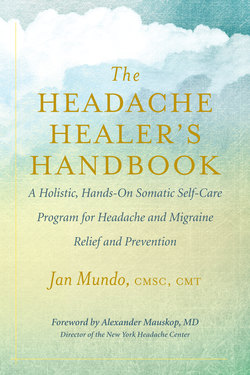Читать книгу The Headache Healer’s Handbook - Jan Mundo - Страница 17
На сайте Литреса книга снята с продажи.
Оглавление6 Dietary Triggers
What you eat (or don’t eat) matters, especially when it comes to migraine. Migraine sufferers can be sensitive to alcohol, caffeine, sugar, skipping meals, lack of water, MSG, preservatives, artificial dyes, flavorings, sweeteners, hot dogs, cured meats, aged and fermented foods, dairy products, wheat gluten, spicy foods, and amines. This chapter delves into these triggers and more.
The purpose of identifying and tracking your food triggers is to uncover your personal migraine cause and effect. Some of the foods discussed in this chapter will likely affect you, and others will not. If you are not sensitive to a food that you enjoy, such as wheat or dairy, despite its presence on a migraine triggers list, then keep it in your diet. For example, cottage cheese and Greek yogurt are widely available sources of high-quality protein that are easy to grab on the run. Don’t eliminate a (healthy) food you enjoy just because it is on a list. Track your diet and find out.
Foods and drinks can trigger migraines for a variety of reasons. If you drink a glass of wine and get a migraine, your trigger could be the alcohol, the sulfites, the naturally occurring tyramine, or a combination of these . . . or perhaps you didn’t eat enough protein that day. There can be additional variables in the equation that determine how, why, when, and where a particular trigger will affect you. For example, quantity can matter. Two glasses of wine or three squares of dark chocolate might be too much, whereas one might be fine. That is why tracking your food and drink intake is so important, and why elimination diets (in which you eliminate most foods and then add them back one by one to identify which are your triggers) are usually unnecessary.
Working with diet is an extremely important part of managing migraine in particular, and chapter 9, “Diet for Migraine Prevention,” discusses this topic in detail, with a complete plan for how to work with foods and meal times. And eating healthfully is good for everyone, even people with headache types not triggered by diet.
Alcohol
Red wine, beer, and liquor are potent migraine triggers, and drinking alcoholic beverages can be hit or miss, even in small amounts. The culprit can be alcohol itself, or the sugars, coloring agents, by-products of fermentation called congeners, tannins in grape skins, sulfites, or tyramine. Individuals vary in the kinds, brands, grades, and vintages they can tolerate. Eating protein and drinking water throughout the day before taking those sips with dinner can sometimes help. Some people with tension-type headache say that drinking an occasional beer, glass of wine, or cocktail eases their tension and helps them relax.
If you are willing to suffer the consequences, you can experiment with clear-colored spirits like tequila or vodka, organic white wine, or prosecco. You just have to decide if it’s worth the risk.
Sherri’s story shows how unpredictable alcohol can be for those who are sensitive to it. She and her husband enjoyed pairing California wines with food until she realized they were connected to her chronic migraines. After three months of sessions with me, Sherri was migraine-free. She was eating well, drinking lots of water and no wine, and didn’t need her relief drug, sumatriptan. One evening at a restaurant, she and her husband took a chance and shared a bottle of white with dinner. Ecstatic that she didn’t get a migraine and thinking she was safe, they ordered a case from the vineyard the following day.
